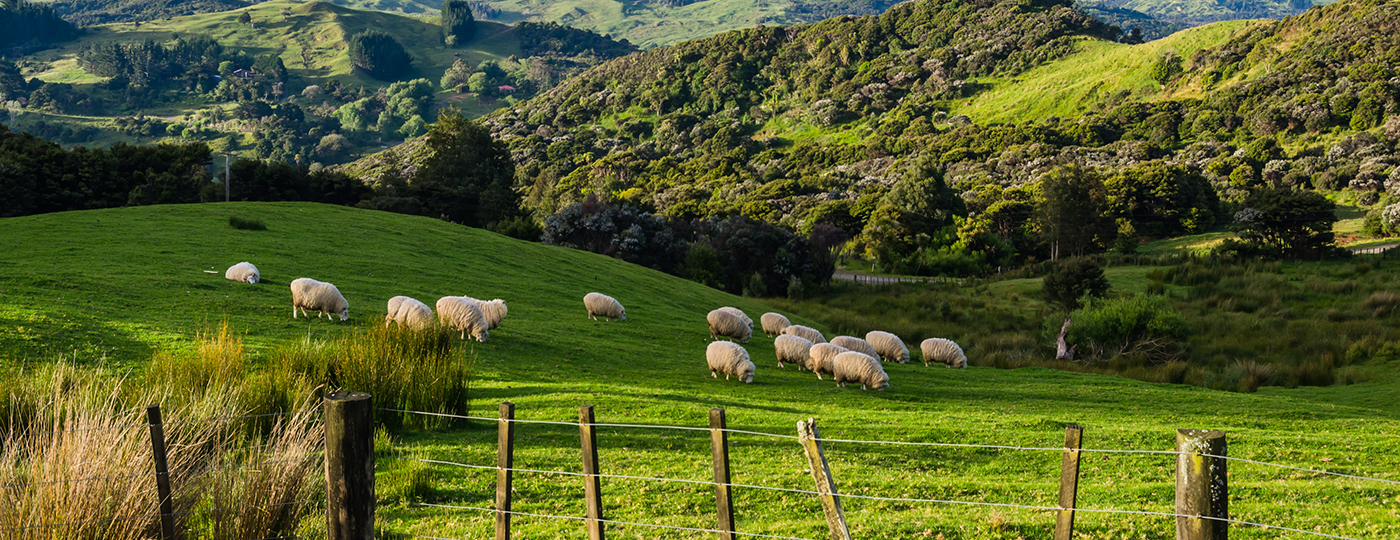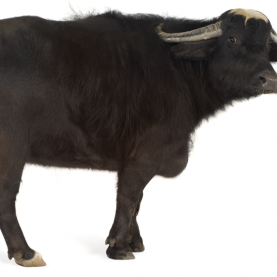Mutton and lamb
Sheep were first domesticated in Mesopotamia some 10 000 years ago and gradually adopted worldwide. Mutton and lamb have been considered a choice dish throughout history and carry symbolic value in some religions. Sheep adapt to all kinds of climate and only need grass to eat. Currently, Australia and New Zealand are the world’s leading producers and exporters of ovine meat.
Sheep, an animal which became global
Meat from sheep, referred to as lamb from animals up to twelve months old and mutton thereafter, has been part of the human diet for thousands of years. Sheep were first domesticated in Mesopotamia, approximately 10 000 years ago. The animal was soon adopted in Central Asia, Africa and Europe. Sheep played a major economic role in pastoral societies, where people also used the wool and the skin, as well as the milk from the ewes. In America, on the other hand, native species of sheep were never domesticated. Reared sheep arrived there with Christopher Columbus, and were later brought to Australia, towards the end of the 18th century.
From earliest Antiquity, sheep and lambs were sacrificed to the gods and acquired the symbolic value of an innocent victim. Since then, lamb meat has often been a delicacy served as an expression of welcome. It has featured in banquets and celebrations and on special occasions in people’s lives, such as births, circumcisions and weddings. Between the 15th and 17th centuries, European aristocrats preferred the more expensive mutton and veal to beef.
Ovine meat is still popular today, although eating habits vary from region to region. In Europe, it is mainly eaten in Mediterranean countries and the British Isles. In France, consumption is in decline, especially amongst the younger generation. By contrast, demand has been increasing in Asia in recent years.
Production
Sheep are particularly accommodating and adapt to hot, cold, windy, dry or damp climates. They are relatively docile and have the added advantage of breeding quickly. They feed on grass alone and withstand winter grazing. In New Zealand, grass is sufficiently green and abundant so animals stay outside in vast fenced areas all year long. In France, however, they often spend the winter in sheep pens and are fed on hay, with food supplements if necessary (protein, mineral salts).
Australia and New Zealand are currently the principal countries producing and exporting lamb and mutton. They supply northern hemisphere countries which have a shortage of ovine meat. Consumers in the European Union and the US prefer to eat lamb rather than mutton, with leg of lamb and lamb chops being the usual cuts. Mutton is popular in Asia.
Demand for mutton is also very high in Persian Gulf countries. Australia exports part of its production as live animals, transported there by sea for halal ritual slaughter.
Countless recipes
Alongside the classic recipes for leg of lamb or lamb chops, other recipes remind us that every bit of the animal can be eaten. ‘Lamb fries’, for example, which are in fact testicles, are considered to be a delicacy in many countries. Scottish haggis is made from sheep entrails (liver, lungs and heart) cooked inside a sheep’s stomach. Moroccan and Algerian cuisine favours sheep’s head prepared in the oven.
Sheep terminology
The word ‘sheep’ refers to the ruminant mammal of the Ovidae sub-family, including the neutered male. The male is called a ram and the female a ewe. The term ‘lamb’ refers to a young sheep, under a year old. A suckling lamb is one that has not yet been weaned. When a lamb is over one year old, it is referred to as a hogget.
D’Amico, Serge (réd. en chef), 1997. L’encyclopédie des aliments. Paris : Éditions Fontaine.
Flandrin, Jean-Louis, s.d. Histoire du goût [en ligne]. Lemangeur-ocha. [Consulté le 2 avril 2016] Disponible à l’adresse : http://www.lemangeur-ocha.com/wp-content/uploads/2012/05/09_Histoire_du_gout_int1.pdf
France agrimer, 2015. Marché mondial de la viande ovine : un commerce en mutation. FranceAgriMer. Septembre 2015. N°22. [Consulté le 2 avril 2016]. Disponible à l’adresse : www.franceagrimer.fr/.../SYN-VRO-22-Le%20marché%20mondial%20
France agrimer, 2012. La consommation de viande ovine / une baisse difficile à enrayer [en ligne]. Juin 2012. [Consulté le 2 avril 2016]. Disponible à l’adresse : www.franceagrimer.fr/content/.../file/SYN-VRO-Conso-ovine-2012.pdf
Neguat, Paule, 2007. Le guide des aliments. Cheseaux-sur-Lausanne : Éditions Atlas.
Rosenberg, Bernard, 1996. La cuisine arabe et son apport à la cuisine européenne. In : Flandrin, Jean-Louis, 1996. Histoire de l’alimentation. pp.345 -365. Paris : Fayard.
Toussaint-Samat, Maguelonne, 1997. Histoire naturelle et morale de la nourriture. Paris : Larousse.






